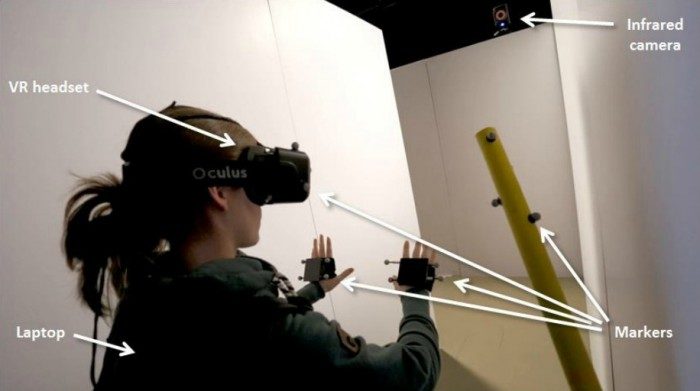Kenzan, a Geneva based 3D visual effects company, has recently released a video showing a curious motion capture installation that could have you discovering a pharaoh’s tomb in a setting that blends the physical world with the virtual. The company calls it Real Virtuality.
Kenzan partnered with Artanim, a motion capture (mocap) company also working out of Geneva, to create the project. The experience relies on Artanim’s mocap system, which comes complete with multiple retro-reflective markers for feet, hands, and props such that the infrared cameras can establish the place of those objects in the physical world.
Real Virtuality uses only a few markers (the little grey ball things) because according to Artanim, the number of markers “must be minimal to keep the visitor’s setup time as short as possible, while ensuring a good tracking accuracy.”
The companies behind the joint venture say Real Virtuality would be ideal for museums, art installations, and general gaming applications like virtual paintball or laser tag.
“We aim at combining a dedicated virtual space with a real one, and merge the visual and audio input provided by the VR headsets with the sense of touch and smell that only physical objects can offer. This would be achieved by combining VR headsets with a physical decor and interactive objects.”
While consumers are unlikely to have such a setup in the home, a system like this would be great for a VR arcade or themepark. Creators of such experiences could easily rearrange the physical walls and props into limitless configurations, allowing for rapid prototyping of VR attractions by reducing design and manufacturing costs by moving much of it to a virtual canvas.







